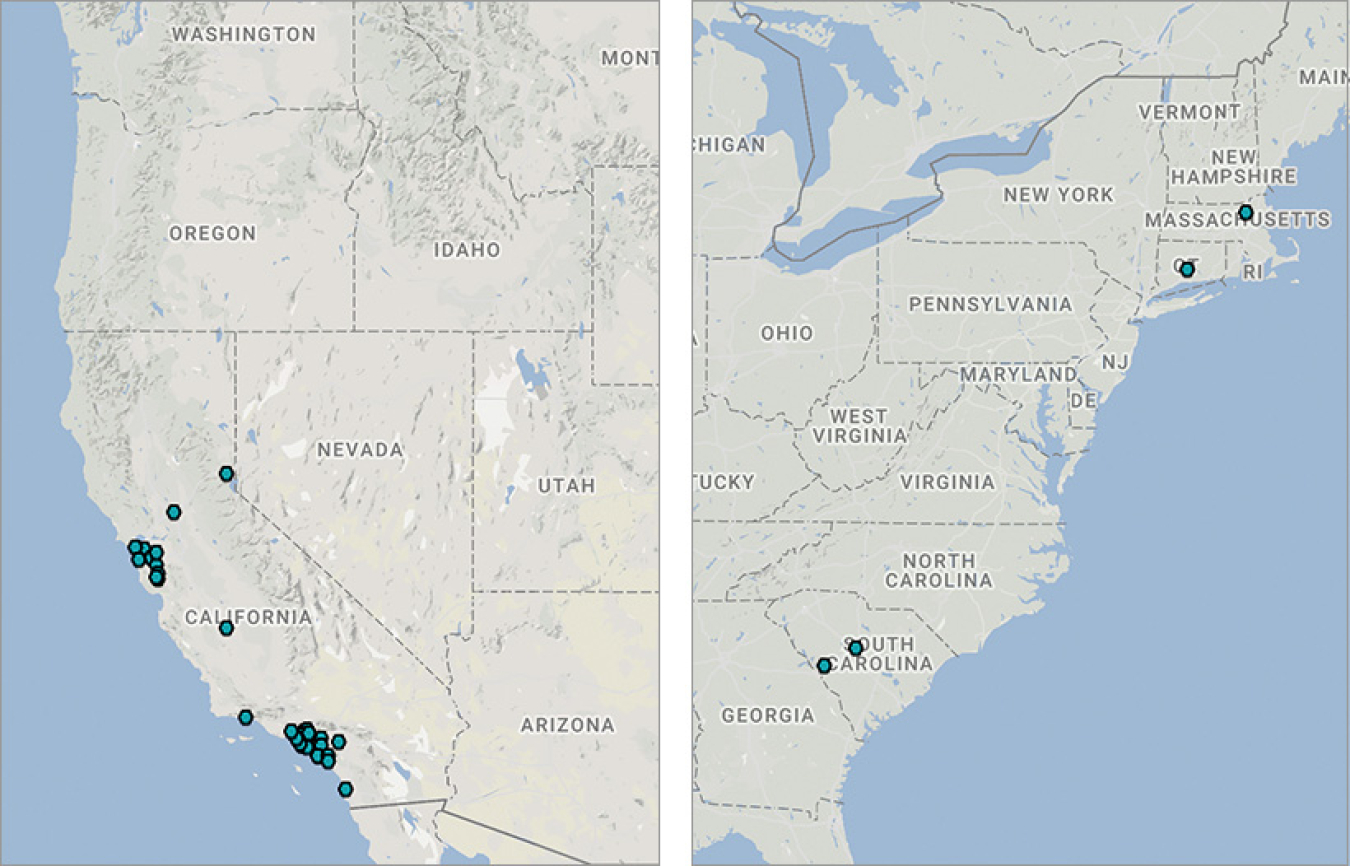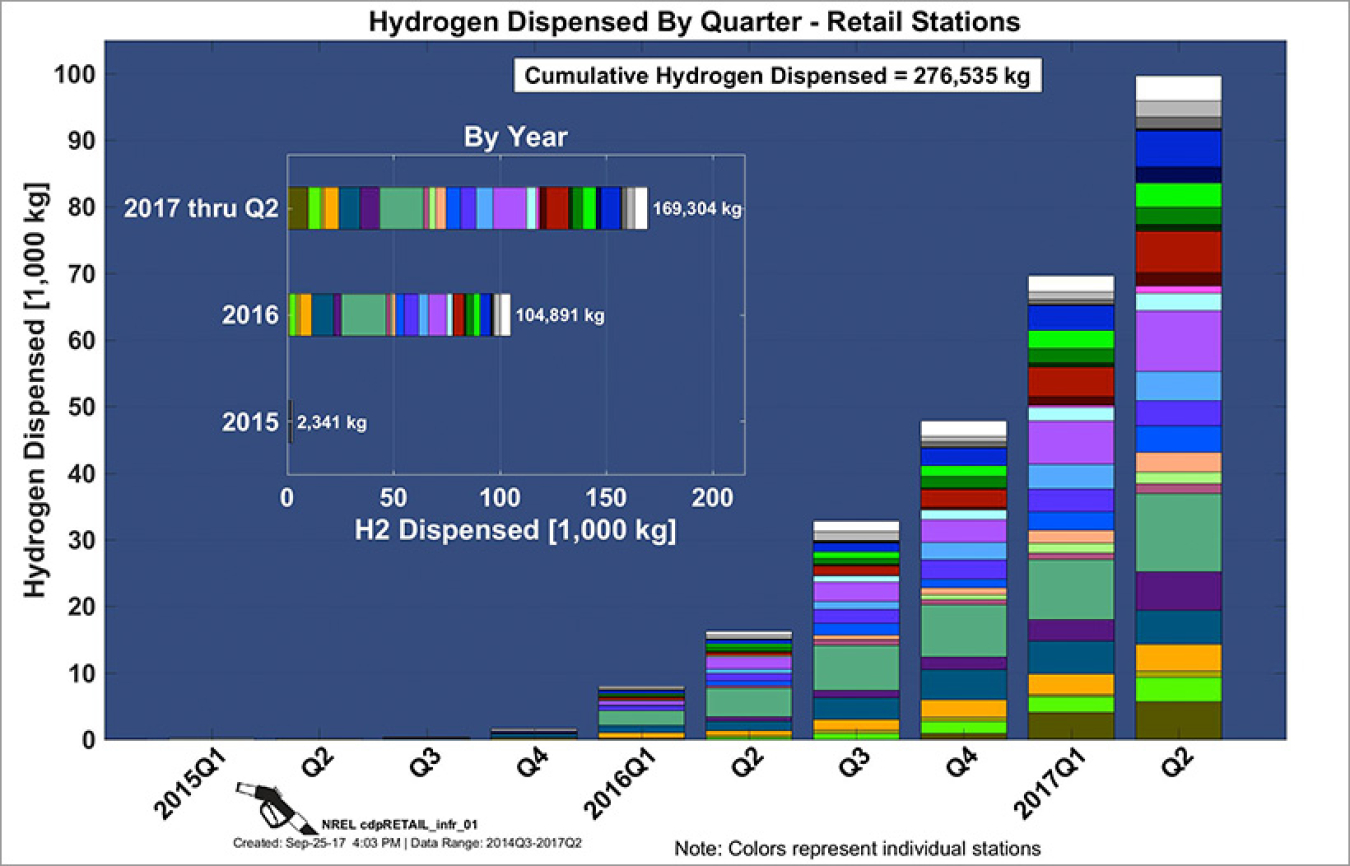As of January 25, 2018, there are 39 publicly available hydrogen stations for fueling fuel cell electric vehicles (FCEVs) in the United States—35 in California, 2 in South Carolina, and 2 in the Northeast. Another 29 public stations in California and 5 in the Northeast are planned.
Publicly Available Hydrogen Stations in the United States as of January 25, 2018

Note: Not all of the publicly available U.S. stations are retail stations (31 of the 39 are retail); the non-retail stations involve special permissions from the original equipment manufacturers to fuel along with pre-authorization from the station provider.
For the retail stations that are open to all FCEV customers with a point-of-sale system, the National Fuel Cell Technology Evaluation Center (NFCTEC) at the National Renewable Energy Laboratory reports a total of 276,535 kg hydrogen dispensed through the 2nd quarter of 2017. The graph shows increasing amounts of hydrogen dispensed each quarter as more FCEVs hit the market and that most existing retail stations opened in 2016.
Hydrogen Dispensed by Quarter—Retail Stations, Data through Q2 2017

Note: Colors represent individual stations, but those stations are not identified. NFCTEC aggregates individual site analysis results into publicly available composite data products that show the status and progress of the technology but don’t identify individual companies.
Sources:
U.S. Department of Energy, Alternative Fuels Data Center, Alternative Fueling Station Locator, accessed January 25, 2018.
National Renewable Energy Laboratory, National Fuel Cell Technology Evaluation Center.

